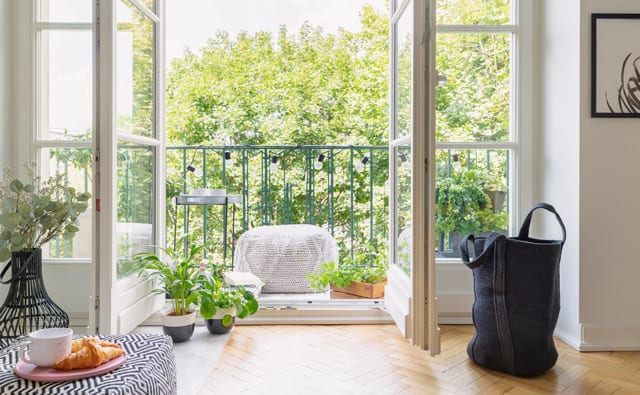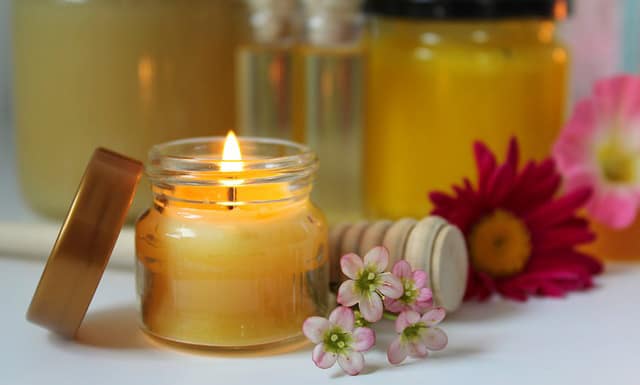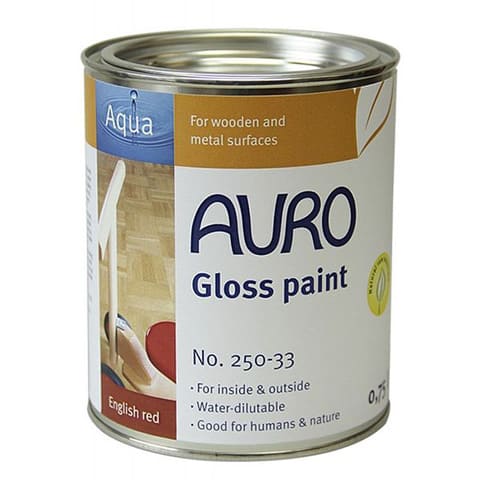Since we spend most of our time indoors, maintaining healthy indoor air quality should be a priority. The US Environmental Protection Agency claims that indoor air pollution is one of the five biggest environmental threats to public health. Poor quality of indoor air can have a negative impact on your health and mood. It has been listed as a cause of asthma, lung disease, and fatigue. Indoor air quality is a serious issue that is being addressed at the local, state, and federal levels.
You can contribute to the good quality of indoor air by choosing the right materials and ensuring that spaces are properly ventilated. You can test the quality of your indoor air with an easily available air testing kit. There is no need for an expensive professional test. Here are ways you can improve the quality of indoor air.
VENTILATION

Ventilation is important for the air in your space to remain fresh. Designers should prioritize air circulation when planning the layout of a room. Proper ventilation, especially in places such as bathrooms and kitchens where excess heat and moisture is generated, is a necessity. Ensure that there is enough space around refrigerators, heaters, and clothes dryers to promote airflow.
Proper circulation removes stagnant air and refreshes the interior air. Stale indoor air causes an increase in dust mites, pet dander, and mold spores, which cause allergies. The simplest way to refresh indoor air quality is to open doors and windows. You could also use a trickle ventilator that allows outdoor air to flow indoors through a filter that removes impurities when doors and windows are closed. Ceiling fans and exhaust fans are cost-effective ways to improve air circulation.
AIR FILTERS

In addition to ensuring proper ventilation that refreshes indoor air with fresh outside air, there is the strategy of using plenty of indoor plants that naturally remove toxins.
English ivy and snake plants can filter out benzene, formaldehyde, trichloroethylene, xylene, and toluene. Peace lilies and florist’s chrysanthemum can also filter out ammonia in addition to the above pollutants. Bamboo palm, Gerbera daisy, Janet Craig dracaena, red-edged dracaena, mass cane, and Warneckii dracaena, are other plants that are excellent at improving air quality.
I don’t know of a better list of air-cleaning plants than the one coming from a series of NASA studies on the topic. Use their results to ensure that you use a variety of plants that cover the major categories of indoor pollutants: benzene, formaldehyde, trichloroethylene, xylene or toluene, and ammonia. They also provide details on which of these plants is toxic to pets.

There are claims that some natural products can be used as air purifiers, such as beeswax candles. It is reported that when lit, these candles release negative ions which suck positively charged pollution particles such as pollen, dust, dirt, and bacteria. Just be mindful that the wick is lead-free (it has to say it). Himalayan salt lamps also release negative ions when lit and achieve similar results as beeswax candles. Bamboo charcoal and activated charcoal remove toxins and purify the air. Essential oils such as eucalyptus, clove, and rosemary can help reduce dust mites in your house.
 Image Source : BANDD DESIGN
Image Source : BANDD DESIGN
If you are wanting to harness modern technology instead, you’ll be wanting to look at electronic air filters. You’ll want to do research on these before buying. A good place to start is to look at this analysis by Molekule. It explains, from their brand’s perspective, the advantage of their patented Photo Electrochemical Oxidation (PECO) technology that they claim completely destroys air pollutants on a molecular level.
Molekule is a brand that I first heard of while reading Sara Malek Barney’s BANDD DESIGN blog. These are different from the more established HEPA filter that hasn’t evolved much since it was developed in the 1940s. Molekule explains that HEPA filters trap some pollutants on the surface of the filter where they continue to survive, whereas the PECO technology actually breaks down pollutants to eliminate bacteria, mold, toxic gasses (VOCs), dust, smoke, and other airborne allergens — including particles 1000 times smaller than what a traditional air filter can catch.
I couldn’t find any impartial scientific studies to evaluate their claims. Therefore, I am also mentioning what is largely considered one of the best HEPA filter units on the market, the IQAir HealthPro Plus, so that you can consider two comparably priced, high-quality units. I’ve been using the HealthPro Plus in my bedroom for years, and it certainly does a good job. I have no need to buy a new unit at this time, yet, if I was in the market, I’d give the Molekule a serious look.
We’ve discussed plants purifying the air, air filters capturing (and even destroying) air pollutants, so what is left is the debatable role of rugs and carpets.
For years there was a backlash against carpeting as over time they can become a cesspool of allergens. On further consideration, studies showed that they actually act as a great trap for air pollutants. When dust particles, which contain germs and allergens, settle on them, they hold on tight. These particles are removed with regular carpet cleaning methods. Regular deep cleaning for those who suffer from allergies is recommended. Read the debate and studies here.
Carpets can emit VOCs for five years or possibly more, as carpet has been reported to release toxics like PFAS over time with “routine wear and tear.” Synthetic carpets are made from nylon fibers with a polypropylene backing, releasing over 40 chemicals including styrene and 4-phenylcyclohexane (4-PC), both of which come from the latex backing used on 95 percent of carpets. The “new carpet” odor is the 4-PC off-gassing, which can cause eye and respiratory tract irritation and may also affect the central nervous system. The adhesive used to affix the carpet to the floor typically contains benzene and toluene, some of the most harmful VOCs.”
Source: Ecology Center
The Ecology Center provides lots of good advice on how to find ecological carpets and the best methods for installing them (without adhesives). Anyone concerned about indoor air quality should do their research on carpeting. When I did a new construction home for myself, I utilized natural wool carpets that met multiple green standards.
POLLUTANTS

Choosing eco-friendly materials such as paints and cleaning products with low emissions of volatile organic compounds (VOC) reduces your toxic footprint and helps to protect your lungs, mind, and body. (Yes, you are literally constantly sniffing glue while inside your home).
Synthetic fragrances in air fresheners contain harmful VOCs. Laundry products, cleaning products, perfumes, hand soaps, and aerosol sprays contain harmful chemicals. In contrast, natural cleaning products such as lemon, baking soda, and vinegar are not toxic.
PVC vinyl shower curtains release VOCs, replace them with a non-vinyl shower curtain. Chlorine in water releases harmful gases, especially during long hot showers, so install a water filter for ALL incoming water, and an even better one on your drinking water. Radon and carbon monoxide detectors will help ensure that your home is free of harmful gases. It shouldn’t need to be said to not smoke indoors- not even the funny stuff.
Air pollutants are also present in adhesives, furniture, foam cushions, and flooring. These items gradually release poisonous toxins into the air. Switch to organic fabrics, formaldehyde-free cabinetry, low-VOC paints, and vegetable-dye rugs. Use Greenguard certified materials that emit no or low VOCs.
HUMIDITY

The ideal indoor humidity level is about 45%. Above 55%-60% is problematic, and under 30% is too dry.
Low humidity allows viruses and germs to thrive, causes damage to electronics, cracking of wood floors and furniture, and chipping of paint. It also makes people vulnerable to cold and respiratory illnesses and causes dry skin and hair. A humidifier will help increase humidity. If need be, you could also opt for natural methods to add moisture to the air such as leaving wet clothes out to dry or placing a pot of water near a heating system.
Excess humidity leads to condensation, dangerous wet insulation, wall molds, peeling paint, and rotting wood. It also causes allergy flare-ups and sleep interruptions. Using a dehumidifier, ceiling fan, air conditioner, and exhaust fans in kitchens and bathrooms helps to decrease humidity. Also, taking cooler showers, drying laundry outdoors, and fixing leaking pipes are ways to reduce indoor humidity. Switch to linen bathroom towels and bedding, as they dry quickly and are antibacterial.
CLEANING

Cleaning, vacuuming, and mopping can help minimize indoor air pollution. Ensure regular cleaning of air conditioner filters, which remove impurities and pollen from the air, and fabrics such as clothes, bedding, curtains, and cushions, where dust mites, which cause nose and throat irritations, tend to linger. Carpets trap dust from the air and must be thoroughly cleaned. Hire a professional cleaner to deep clean your carpets and furniture regularly. Just be careful that they don’t use toxic chemicals in their cleaning process! Cleaning furniture with a damp cloth is a simple way to get rid of dust.
We all love our pets! But try keeping them off your bed and sofas to reduce hair build-up. Keeping your pets clean will reduce pet dander, which leads to asthma-like symptoms or can worsen your asthma. Also, try to brush them outdoors.
Always use exhaust hoods while cooking. Keep ovens, burners, and toasters clean as dust and food particles release harmful VOCs when heated or burnt.
Molds that grow in damp places release spores that trigger allergies. Use chemical free methods to remove them such as vinegar, which kills 82% of mold spores in addition to viruses and bacteria; tea tree oil; (odorless) citrus seed extract and water; and baking soda.
Make it a habit to remove your outdoor footwear when you enter your home. This way, you can avoid bringing dust, pollen, dirt, and chemicals into your home.
Do not ignore the importance of good indoor air quality; it is vital for good health. Start adopting these steps to reduce pollutants, allergens, and toxins and significantly improve your indoor air quality.
Breathe healthy, live healthy!♥


